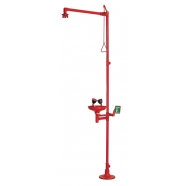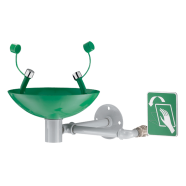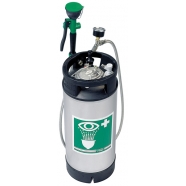Emergency Wash Stations
Why are emergency showers or eyewash stations important?
The first 10 to 15 seconds after exposure to a hazardous substance, especially a corrosive substance, are critical. Delaying treatment, even for a few seconds, may cause serious injury.
Emergency showers and eyewash stations provide on-the-spot decontamination. They allow workers to flush away hazardous substances that can cause injury.
Accidental chemical exposures can still occur even with good engineering controls and safety precautions. As a result, it is essential to look beyond the use of goggles, face shields, and procedures for using personal protective equipment. Emergency showers and eyewash stations are a necessary backup to minimize the effects of accident exposure to chemicals.
Emergency showers can also be used effectively in extinguishing clothing fires or for flushing contaminants off clothing.
Emergency showers, also known as drench or deluge showers, are designed to flush the user's head and body. They should not be used to flush the user's eyes because the high rate or pressure of water flow could damage the eyes in some instances. Eyewash stations are designed to flush the eye and face area only. There are combination units available that contain both features: a shower and an eyewash.
The need for emergency showers or eyewash stations is based on the properties of the chemicals that workers use and the tasks that they do in the workplace. A job hazard analysis can provide an evaluation of the potential hazards of the job and the work areas. The selection of protection -- emergency shower, eyewash or both -- should match the hazard.
In some jobs or work areas, the effect of a hazard may be limited to the worker's face and eyes. Therefore, an eyewash station may be the appropriate device for worker protection. In other situations the worker may risk part or full body contact with dangerous substances. In these areas, an emergency shower may be more appropriate.
A combination unit has the ability to flush any part of the body or all of the body. It is the most protective device and should be used wherever possible. This unit is also appropriate in work areas where detailed information about the hazards is lacking, or where complex, hazardous operations involve many chemicals with different properties. A combination unit is useful in situations where there are difficulties handling a worker who may not be able to follow directions because of intense pain or shock from an injury.
Ex Tax: £833.33
Ex Tax: £292.42
Ex Tax: £814.28






